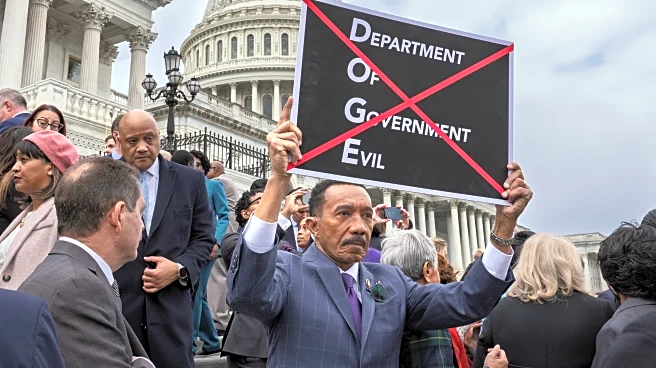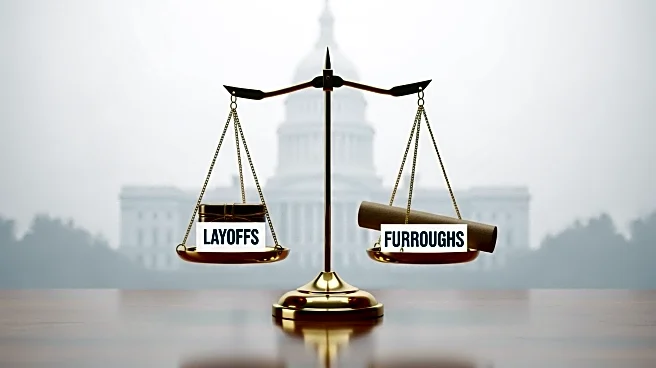What's Happening?
The federal workforce is undergoing significant changes as the possibility of a government shutdown looms. The Office of Management and Budget has issued a directive for agencies to prepare for mass layoffs. This comes after President Trump signed an executive order in February, instructing government agencies to prepare for workforce reductions. As of March 2025, the federal workforce has decreased from 2.3 million employees in September 2024 to 2.2 million. The Department of Health and Human Services announced a reduction from 82,000 to 62,000 full-time employees, although data shows a smaller reduction of 350 employees. Agencies such as NASA, the Environmental Protection Agency, and the National Science Foundation have confirmed workforce reductions. The federal government has laid off approximately 49,000 employees across 48 agencies, though the exact number remains unclear.
Why It's Important?
The restructuring of the federal workforce has significant implications for government operations and public services. A reduction in workforce could lead to decreased efficiency and slower response times in various federal agencies, affecting services that millions of Americans rely on. The layoffs could also impact the economy, particularly in regions with high concentrations of federal employees, such as Washington, D.C., Maryland, and Virginia. The uncertainty surrounding the potential government shutdown adds to the challenges faced by federal employees, who may experience job insecurity and financial instability. The broader impact on public policy and government effectiveness remains a critical concern.
What's Next?
If the government shutdown occurs, further layoffs and workforce reductions are expected, potentially exacerbating the challenges faced by federal agencies. Political leaders and stakeholders may need to negotiate solutions to prevent the shutdown and address the workforce restructuring. The situation may prompt discussions on the future of federal employment and the need for strategic planning to ensure continuity of services. Agencies may continue to offer early resignation packages and voluntary separation incentives to manage workforce changes.
Beyond the Headlines
The restructuring of the federal workforce raises ethical and legal questions about the treatment of employees and the transparency of government operations. The potential shutdown highlights the fragility of government funding and the need for sustainable fiscal policies. Long-term shifts in federal employment could influence public perception of government effectiveness and trust in public institutions. The situation may also lead to cultural changes within agencies as they adapt to new operational realities.













